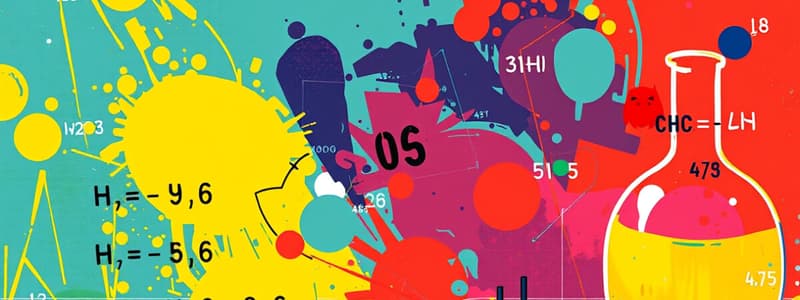Podcast
Questions and Answers
Given that the density of Hg(l) at 0°C is about 14 g mL-1, which of the following is closest to the volume of one mole of Hg(l) at this temperature?
Given that the density of Hg(l) at 0°C is about 14 g mL-1, which of the following is closest to the volume of one mole of Hg(l) at this temperature?
- 0.14 mL
- 14 mL (correct)
- 0.070 mL
- 1.4 mL
- 28 mL
In a 1g sample of NaCl, KBr, and KCl, which of the following lists the samples in order of increasing number of moles in the sample?
In a 1g sample of NaCl, KBr, and KCl, which of the following lists the samples in order of increasing number of moles in the sample?
NaCl
Study Notes
Density and Volume Calculations
- Mercury (Hg) has a density of approximately 14 g/mL at 0°C.
- To find the volume of one mole of Hg at this temperature, use the formula:
- Volume = Mass / Density
- The molar mass of mercury is about 200.59 g.
- Calculating with density:
- Volume = 200.59 g / 14 g/mL ≈ 14.34 mL
- The closest answer to the calculated volume is 14 mL, making option D the correct choice.
Mole Calculations in Compounds
- A student compares 1g samples of NaCl, KBr, and KCl.
- Molar masses relevant for calculations:
- NaCl: 58.44 g/mol
- KBr: 119.00 g/mol
- KCl: 74.55 g/mol
- To determine the number of moles, use:
- Moles = Mass / Molar Mass
- Calculating moles for each:
- NaCl: 1 g / 58.44 g/mol ≈ 0.0171 moles
- KBr: 1 g / 119 g/mol ≈ 0.0084 moles
- KCl: 1 g / 74.55 g/mol ≈ 0.0134 moles
- Order of increasing moles: KBr < KCl < NaCl.
Studying That Suits You
Use AI to generate personalized quizzes and flashcards to suit your learning preferences.
Description
Test your knowledge with practice problems from Chemistry Unit 1, designed specifically for AP Classroom. This quiz covers topics such as density calculations and mole conversions for various compounds. Challenge yourself and assess your understanding of these fundamental concepts!




